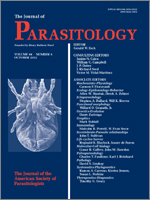Nothoaspis reddelli Keirans and Clifford, 1975, was described from 3 males collected in Grutas de Xtacumbilxunaán, Campeche, Mexico, although females have remained undescribed for 37 yr. Recently adult females of this species were collected from Cueva de Villa Luz ( = Cueva de las Sardinas, Cueva del Azufre), in Tapijulapa, Tabasco, Mexico. Here we present a morphological description of the female stage, together with 16S rDNA sequences that confirm the conspecificity of our female, male, and nymphal specimens. The female integument of the anterior portion of the dorsal surface is smooth (nothoaspis), appearing to consist of 3 large “subunits,” 1 anterior and 2 posterior, each with a small sublateral “subunit” on either side. The remaining dorsal covered integument is a cell-like configuration. The hood is large and bluntly rounded, and visible dorsally. The spiracular plate is oval. It possesses 1 pair of posthypostomal setae. The palpal trochanter has 1 pair of setae and a 5/5 hypostome decreasing to 4/4 at the apex. There is a single central pore at the base of the hypostome.
How to translate text using browser tools
1 October 2012
Molecular Identification and Description of the Female of Nothoaspis reddelli (Ixodida: Argasidae) from A Cave in Southeastern Mexico
Carmen Guzmán-Cornejo,
Ricardo Paredes-León,
Marcelo B. Labruna,
Santiago Nava,
José M. Venzal
ACCESS THE FULL ARTICLE

Journal of Parasitology
Vol. 98 • No. 5
October 2012
Vol. 98 • No. 5
October 2012





